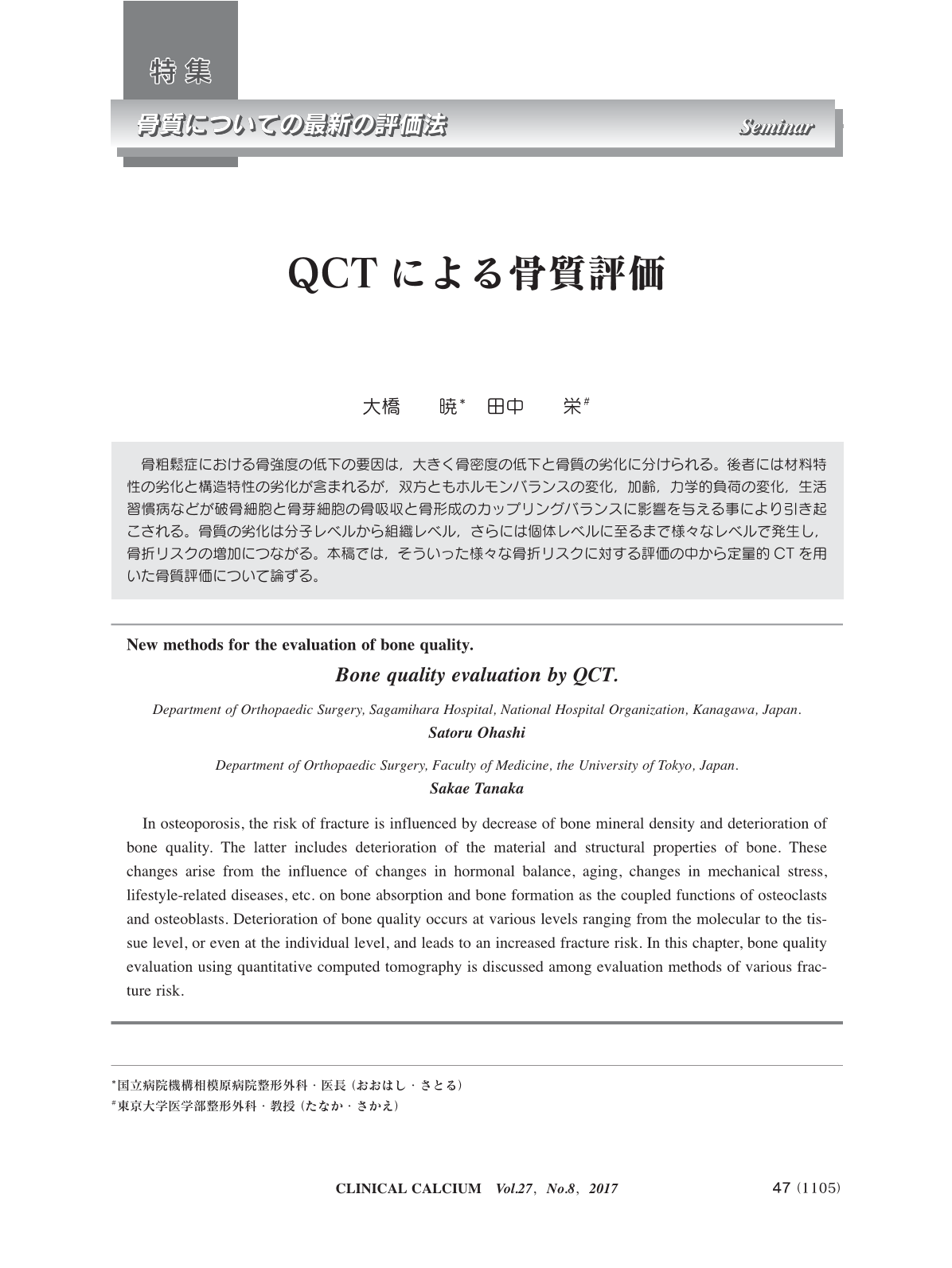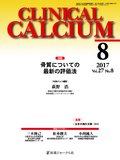Japanese
English
- 有料閲覧
- Abstract 文献概要
- 1ページ目 Look Inside
- 参考文献 Reference
骨粗鬆症における骨強度の低下の要因は,大きく骨密度の低下と骨質の劣化に分けられる。後者には材料特性の劣化と構造特性の劣化が含まれるが,双方ともホルモンバランスの変化,加齢,力学的負荷の変化,生活習慣病などが破骨細胞と骨芽細胞の骨吸収と骨形成のカップリングバランスに影響を与える事により引き起こされる。骨質の劣化は分子レベルから組織レベル,さらには個体レベルに至るまで様々なレベルで発生し,骨折リスクの増加につながる。本稿では,そういった様々な骨折リスクに対する評価の中から定量的CTを用いた骨質評価について論ずる。
In osteoporosis, the risk of fracture is influenced by decrease of bone mineral density and deterioration of bone quality. The latter includes deterioration of the material and structural properties of bone. These changes arise from the influence of changes in hormonal balance, aging, changes in mechanical stress, lifestyle-related diseases, etc. on bone absorption and bone formation as the coupled functions of osteoclasts and osteoblasts. Deterioration of bone quality occurs at various levels ranging from the molecular to the tissue level, or even at the individual level, and leads to an increased fracture risk. In this chapter, bone quality evaluation using quantitative computed tomography is discussed among evaluation methods of various fracture risk.



